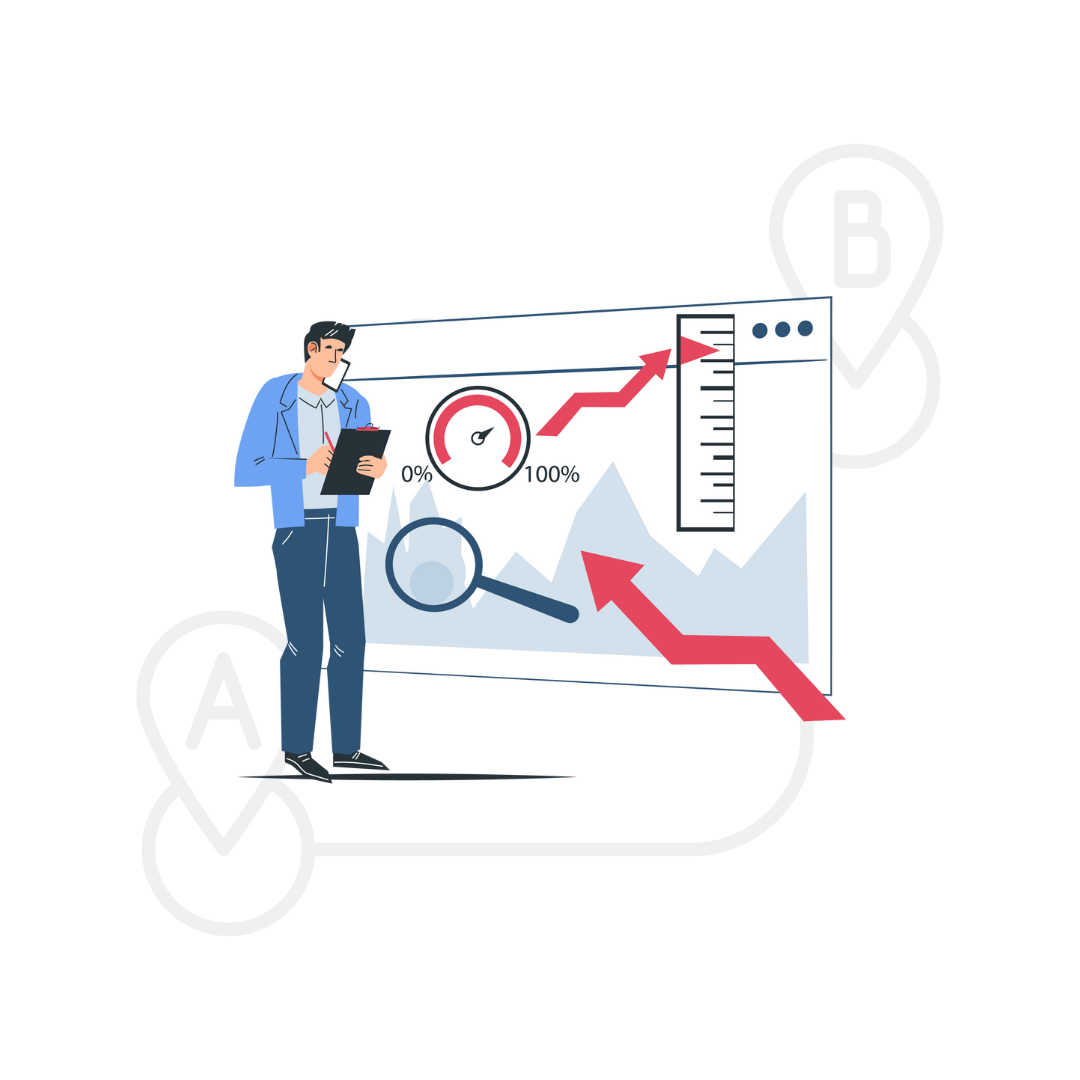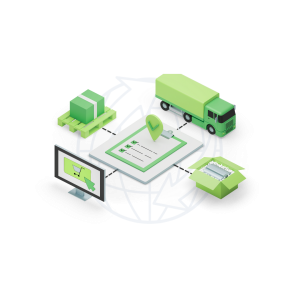Introduction
From natural disasters to geopolitical tensions and from pandemics to cyber-attacks, the potential threats to supply chains are numerous and diverse. In this complex landscape, the concept of supply chain resilience has emerged as a critical factor for business success and continuity
Supply chain resilience refers to the ability of a supply network to anticipate, prepare for, and effectively respond to disruptions while maintaining continuous operations. It encompasses the capacity to bounce back from unforeseen events and adapt to changing circumstances swiftly and efficiently. This adaptive capability is not just about surviving disruptions; it’s about thriving in the face of adversity and emerging stronger from challenges.
The importance of supply chain resilience cannot be overstated in our current business environment. Recent global events, such as the COVID-19 pandemic and the Suez Canal blockage, have starkly illustrated the vulnerabilities inherent in many supply chains. These incidents have served as wake-up calls for businesses worldwide, highlighting the need for robust, flexible, and resilient supply chain strategies.
As we delve deeper into this topic,
we’ll explore the key components of supply chain resilience,
its benefits,
and practical strategies for building and maintaining resilient supply chains.
We’ll also examine how emerging technologies and innovative approaches are shaping the future of supply chain management, enabling businesses to navigate uncertainties with greater confidence and agility.
Whether you’re a seasoned supply chain professional or a business leader looking to strengthen your organization’s resilience, this comprehensive guide will provide valuable insights and actionable strategies to enhance your supply chain’s ability to withstand and thrive amidst disruptions.
Key Takeaways
- Holistic Approach: Resilience should be integrated into every aspect of supply chain management, from strategic planning to day-to-day operations.
- Technology Adoption: Embracing emerging technologies like AI, IoT, and blockchain can significantly enhance visibility, predictability, and responsiveness.
- Risk Management: Developing robust risk assessment and mitigation strategies is crucial for proactively addressing potential disruptions.
- Collaboration: Building strong relationships with suppliers, partners, and even competitors can create a more resilient ecosystem.
- Agility and Flexibility: Designing supply chains that can quickly adapt to changing circumstances is key to long-term resilience.
- Continuous Learning: Regularly reviewing and updating resilience strategies based on new insights and experiences is essential for staying ahead of emerging risks.
- Sustainability Integration: Incorporating sustainability principles into supply chain resilience strategies can address long-term risks and create additional value.
Key Components of Supply Chain Resilience
Supply chain resilience is built on several fundamental pillars that work in concert to create a robust and adaptable system. Understanding these key components is crucial for developing effective strategies to enhance supply chain resilience.
1. Visibility and Transparency
One of the cornerstones of supply chain resilience is comprehensive visibility across the entire network. This involves having real-time insights into every aspect of the supply chain, from raw material sourcing to final product delivery. Enhanced visibility allows organizations to:
- Identify potential disruptions early
- Track inventory levels and movement accurately
- Monitor supplier performance and capacity
- Anticipate demand fluctuations
Implementing advanced tracking systems and leveraging data analytics tools can significantly improve supply chain visibility. For instance, IoT devices can provide real-time updates on shipment locations and conditions, while blockchain technology can ensure transparency and traceability throughout the supply chain.
2. Flexibility and Adaptability
A resilient supply chain must be able to pivot quickly in response to changing circumstances. This flexibility encompasses various aspects:
- Diversified supplier base to reduce dependency on single sources
- Modular product designs that allow for easy substitution of components
- Scalable production capabilities to meet fluctuating demand
- Agile logistics networks that can reroute shipments as needed
Developing this flexibility often requires a shift in mindset from purely efficiency-focused operations to a more balanced approach that prioritizes agility and responsiveness.
3. Risk Assessment and Management
Proactive risk management is a critical component of supply chain resilience. This involves:
- Regularly assessing potential risks across the entire supply chain
- Developing contingency plans for various scenarios
- Conducting stress tests to evaluate the supply chain’s ability to withstand disruptions
- Implementing risk mitigation strategies, such as strategic inventory buffers
By anticipating potential disruptions and preparing for them in advance, organizations can significantly reduce the impact of unforeseen events on their operations.
4. Collaboration and Communication
Resilient supply chains are built on strong relationships and effective communication channels. This includes:
- Fostering close partnerships with suppliers and logistics providers
- Establishing clear communication protocols for crises
- Sharing information and best practices across the supply chain network
- Collaborating with industry peers and government agencies on resilience initiatives
Open lines of communication and a collaborative approach can lead to faster problem-solving and more effective responses to disruptions.
5. Continuous Improvement and Learning
Building resilience is an ongoing process that requires constant evaluation and refinement. Key aspects include:
- Regularly reviewing and updating resilience strategies
- Learning from past disruptions and near-misses
- Investing in employee training and skill development
- Staying informed about emerging risks and industry trends
By fostering a culture of continuous improvement, organizations can ensure that their supply chain resilience strategies remain relevant and effective in the face of evolving challenges.
Benefits of Supply Chain Resilience
Investing in supply chain resilience offers numerous advantages that extend beyond mere risk mitigation. Let’s explore the key benefits that organizations can reap from building resilient supply chains.
1. Enhanced Operational Efficiency
Contrary to the common misconception that resilience comes at the cost of efficiency, a well-designed, resilient supply chain can improve overall operational efficiency. Here’s how:
- Streamlined processes: The visibility and flexibility required for resilience often lead to the identification and elimination of inefficiencies in the supply chain.
- Reduced waste: Better forecasting and inventory management reduce excess stock and associated carrying costs.
- Faster problem resolution: With improved visibility and communication, issues can be identified and addressed more quickly, minimizing downtime and disruptions.
2. Improved Customer Satisfaction
Resilient supply chains are better equipped to meet customer expectations consistently, even in challenging circumstances. This leads to:
- Higher order fulfillment rates
- Shorter lead times
- Increased customer loyalty
- Positive brand reputation
By ensuring a steady flow of products and services, resilient supply chains help organizations maintain strong customer relationships and gain a competitive edge in the market.
3. Financial Stability and Growth
While building resilience may require initial investments, it can lead to significant financial benefits in the long run:
- Reduced losses from disruptions: By minimizing the impact of supply chain disruptions, organizations can avoid costly downtime and lost sales.
- Lower insurance premiums: Demonstrating robust risk management practices can lead to more favorable insurance terms.
- Increased investor confidence: Companies with resilient supply chains are often viewed as more stable and attractive investments.
- New business opportunities: The agility and adaptability of resilient supply chains can enable organizations to capitalize on new market opportunities more quickly.
4. Regulatory Compliance and Risk Mitigation
As supply chain regulations become increasingly complex, resilience can help organizations stay compliant and mitigate various risks:
- Better adherence to environmental and social responsibility standards
- Reduced likelihood of supply chain-related legal issues
- Enhanced ability to adapt to changing regulatory landscapes
- Improved crisis management capabilities
5. Competitive Advantage
In today’s volatile business environment, supply chain resilience can be a significant differentiator:
- Ability to maintain operations during disruptions when competitors may falter
- Faster recovery from industry-wide challenges
- Enhanced reputation as a reliable supplier or partner
- Increased agility in responding to market changes and customer demands
Strategies for Building Supply Chain Resilience
Developing a resilient supply chain requires a multifaceted approach that addresses various aspects of the supply chain ecosystem.
Here are some key strategies that organizations can employ to enhance their supply chain resilience:
1. Diversification of Suppliers and Manufacturing Locations
One of the most effective ways to build resilience is to reduce dependency on single sources of supply or production. This strategy involves:
- Identifying critical components and materials
- Developing relationships with multiple suppliers for these items
- Exploring alternative manufacturing locations to spread risk geographically
- Considering nearshoring or reshoring options to reduce reliance on distant suppliers
By diversifying, organizations can mitigate the risk of disruptions caused by issues with a single supplier or in a specific region.
2. Implementation of Advanced Technologies
Leveraging cutting-edge technologies can significantly enhance supply chain visibility, flexibility, and efficiency. Key technologies include:
- Internet of Things (IoT) for real-time tracking and monitoring
- Artificial Intelligence (AI) and Machine Learning (ML) for predictive analytics and demand forecasting
- Blockchain for improved traceability and transparency
- Cloud computing for enhanced data sharing and collaboration
- Robotic Process Automation (RPA) for streamlining repetitive tasks
These technologies enable organizations to make data-driven decisions, respond quickly to changes, and optimize their supply chain operations.
3. Development of Robust Risk Management Frameworks
A comprehensive risk management approach is crucial for building resilience. This involves:
- Conducting regular risk assessments across the entire supply chain
- Developing scenario plans for various types of disruptions
- Implementing early warning systems to detect potential issues
- Creating and regularly updating business continuity plans
- Conducting stress tests to evaluate the supply chain’s resilience
By proactively identifying and preparing for potential risks, organizations can minimize the impact of disruptions when they occur.
4. Inventory Optimization and Buffer Stock Management
While lean inventory practices have been popular for efficiency, resilience often requires a more balanced approach:
- Identifying critical components and products that require buffer stocks
- Implementing dynamic inventory management systems that adjust based on risk levels
- Exploring vendor-managed inventory options for key suppliers
- Utilizing predictive analytics to optimize inventory levels
The goal is to maintain enough inventory to buffer against disruptions without incurring excessive carrying costs.
5. Fostering Strong Supplier Relationships
Building strong, collaborative relationships with suppliers is essential for supply chain resilience:
- Developing long-term partnerships with key suppliers
- Implementing supplier development programs to enhance capabilities
- Sharing forecasts and plans to improve alignment
- Establishing clear communication channels for rapid problem-solving
Strong supplier relationships can lead to better cooperation during crises and more flexible responses to changing needs.
6. Enhancing Supply Chain Visibility
Improving visibility across the entire supply chain is crucial for identifying and addressing potential issues:
- Implementing end-to-end tracking systems
- Utilizing supply chain control towers for centralized monitoring
- Encouraging information sharing among supply chain partners
- Leveraging data analytics for insights and decision-making
Enhanced visibility enables organizations to detect disruptions early and respond more effectively.
7. Developing Agile and Flexible Logistics Networks
Creating adaptable logistics networks can significantly enhance supply chain resilience:
- Exploring multi-modal transportation options
- Developing relationships with multiple logistics providers
- Implementing dynamic routing capabilities
- Considering decentralized distribution models
Flexible logistics networks allow for quicker adjustments in response to disruptions or changing market conditions.
Measuring Supply Chain Resilience
To effectively manage and improve supply chain resilience, organizations need to establish clear metrics and measurement frameworks. These metrics help in assessing the current state of resilience, identifying areas for improvement, and tracking progress over time.
Key Performance Indicators (KPIs) for Supply Chain Resilience
Several supply chain KPIs can be used to measure different aspects of supply chain resilience:
- Time to Recover (TTR): This metric measures how quickly a supply chain can return to normal operations after a disruption. A lower TTR indicates higher resilience.
- Time to Survive (TTS): This represents the duration a supply chain can continue operating using available inventory and resources during a disruption. A higher TTS suggests better preparedness.
- Risk Exposure Index: This composite metric assesses the overall vulnerability of the supply chain to various risks.
- Supplier Risk Score: This evaluates the reliability and resilience of individual suppliers based on factors like financial stability, geographic location, and past performance.
- Inventory Turnover Ratio: While traditionally used for efficiency, in the context of resilience, this metric helps balance between lean operations and maintaining adequate buffer stocks.
- Order Fulfillment Rate: This measures the ability to meet customer demands consistently, even during disruptions.
- Supply Chain Visibility Score: This assesses the level of real-time information available across the supply chain network.
Challenges in Building Supply Chain Resilience
While the benefits of supply chain resilience are clear, organizations often face significant challenges in implementing and maintaining resilient supply chain strategies. Understanding these challenges is crucial for developing effective solutions and overcoming obstacles.
1. Cost and Resource Allocation
One of the primary challenges in building supply chain resilience is the perceived trade-off between resilience and efficiency:
- Initial Investment: Implementing resilience strategies often requires significant upfront costs in technology, processes, and inventory.
- Ongoing Expenses: Maintaining buffer stocks, diversifying suppliers, and running redundant systems can increase operational costs.
- ROI Justification: The benefits of resilience are often realized in the long term or during crises, making it challenging to justify investments in the short term.
- Resource Competition: Resilience initiatives may compete with other business priorities for limited resources and budget allocations.
2. Complexity Management
Modern supply chains are inherently complex, and adding resilience measures can further complicate management:
- Global Networks: Managing a diverse, global network of suppliers and partners can be logistically challenging.
- Data Overload: Increased visibility often leads to vast amounts of data that need to be effectively processed and analyzed.
- Interdependencies: Understanding and managing the complex interdependencies within the supply chain ecosystem can be daunting.
- Balancing Flexibility and Standardization: Finding the right balance between flexible processes and standardized operations across the supply chain can be difficult.
3. Cultural and Organizational Resistance
Implementing resilience strategies often requires significant changes in organizational culture and practices:
- Resistance to Change: Employees and stakeholders may resist new processes or technologies that disrupt established ways of working.
- Siloed Thinking: Resilience requires cross-functional collaboration, which can be challenging in organizations with rigid departmental structures.
- Short-term Focus: The pressure for immediate results can overshadow the long-term benefits of resilience initiatives.
- Risk Perception: There may be a lack of urgency in addressing resilience if the organization hasn’t recently experienced significant disruptions.
4. Technology Integration and Data Management
While technology is a key enabler of supply chain resilience, its integration presents several challenges:
- Legacy Systems: Integrating new technologies with existing legacy systems can be technically complex and costly.
- Data Quality and Consistency: Ensuring data accuracy and consistency across various systems and partners is crucial but challenging.
- Cybersecurity Concerns: As supply chains become more digitally connected, the risk of cyber threats increases, requiring robust security measures.
- Skill Gaps: Organizations may lack the in-house expertise to effectively implement and manage advanced supply chain technologies.
5. Regulatory Compliance and Global Variability
Operating in a global environment adds layers of complexity to supply chain resilience:
- Diverse Regulations: Navigating varying regulations across different countries and regions can be challenging.
- Geopolitical Risks: Political instability or trade tensions can quickly disrupt carefully planned supply chain strategies.
- Cultural Differences: Managing relationships with suppliers and partners across different cultures requires nuanced approaches.
- Environmental and Social Responsibility: Ensuring compliance with sustainability and ethical standards across the entire supply chain can be complex.
The Role of Technology in Supply Chain Resilience
Technology plays a pivotal role in enhancing supply chain resilience, offering tools and capabilities that enable organizations to anticipate, respond to, and recover from disruptions more effectively. Let’s explore how various technologies contribute to building more resilient supply chains.
1. Artificial Intelligence (AI) and Machine Learning (ML)
AI and ML are transforming supply chain management by providing predictive insights and automating complex decision-making processes:
- Demand Forecasting: AI algorithms can analyze vast amounts of data to predict demand patterns more accurately, helping organizations optimize inventory levels and production schedules.
- Risk Prediction: ML models can identify potential disruptions by analyzing historical data and current market conditions, allowing for proactive risk mitigation.
- Automated Decision-Making: AI-powered systems can make real-time decisions on routing, inventory allocation, and supplier selection based on current conditions and predefined parameters.
- Anomaly Detection: ML algorithms can quickly identify unusual patterns or events in the supply chain, flagging potential issues before they escalate.
2. Internet of Things (IoT)
IoT devices provide real-time visibility and data collection across the supply chain:
- Asset Tracking: IoT sensors can track the location and condition of goods in transit, providing real-time updates and alerts.
- Equipment Monitoring: Sensors on manufacturing equipment can predict maintenance needs, reducing unexpected downtime.
- Environmental Monitoring: IoT devices can monitor storage conditions (temperature, humidity) to ensure product quality and compliance.
- Supply Chain Visibility: A network of IoT devices across the supply chain provides comprehensive, real-time visibility into operations.
3. Advanced Analytics and Big Data
Leveraging big data and advanced analytics can provide deeper insights and improve decision-making:
- Scenario Planning: Advanced analytics can simulate various disruption scenarios, helping organizations prepare for different eventualities.
- Performance Optimization: Big data analytics can identify inefficiencies and bottlenecks in the supply chain, suggesting improvements.
- Supplier Risk Assessment: Analytics tools can evaluate supplier performance and risk factors, aiding in supplier selection and management.
- Real-Time Decision Support: Advanced analytics platforms can provide real-time insights to support rapid decision-making during disruptions.
4. Digital Twin Technology
Digital twins create virtual replicas of physical supply chains, enabling simulation and optimization:
- What-If Analysis: Organizations can test different strategies and their impacts without disrupting actual operations.
- Continuous Optimization: Digital twins can suggest ongoing improvements based on real-time data and simulations.
- Risk Assessment: Simulations can help identify potential vulnerabilities in the supply chain before they become actual problems.
- Training and Planning: Digital twins provide a safe environment for training staff and testing emergency response plans.
Future Trends in Supply Chain Resilience
As the business landscape continues to evolve, so too do the strategies and technologies for enhancing supply chain resilience. Looking ahead, several emerging trends are set to shape the future of supply chain management and resilience.
1. Autonomous Supply Chains
The concept of autonomous supply chains, powered by AI and advanced robotics, is gaining traction:
- Self-Optimizing Networks: AI-driven systems that can automatically adjust supply chain operations based on real-time data and changing conditions.
- Autonomous Vehicles and Drones: For transportation and last-mile delivery, reducing dependency on human operators and increasing flexibility.
- Robotic Process Automation (RPA): For handling routine tasks, freeing up human resources for more strategic activities.
- Predictive Maintenance: AI-powered systems that can predict and prevent equipment failures before they occur, minimizing disruptions.
2. Circular Supply Chains
Sustainability is becoming increasingly important, leading to the development of circular supply chain models:
- Closed-Loop Systems: Designing products and supply chains for reuse, refurbishment, and recycling.
- Reverse Logistics: Efficient systems for handling returns and recycling, turning waste into valuable resources.
- Sustainable Sourcing: Increased focus on environmentally friendly and ethically sourced materials.
- Carbon-Neutral Operations: Strategies to reduce and offset carbon emissions across the entire supply chain.
3. Hyper-Localization and Micro Supply Chains
The trend towards localization is expected to continue, driven by a desire for greater control and reduced transportation risks:
- 3D Printing and Additive Manufacturing: Enabling on-demand, localized production of parts and products.
- Urban Micro-Fulfillment Centers: Small, automated facilities located close to customers for faster delivery and reduced transportation costs.
- Local Supplier Networks: Building relationships with local suppliers to reduce dependency on global supply chains.
- Customization Hubs: Local facilities capable of customizing products to meet specific regional or individual customer needs.
4. Enhanced Cybersecurity Measures
As supply chains become more digitally connected, cybersecurity will become increasingly critical:
- AI-Powered Threat Detection: Advanced systems capable of identifying and responding to cyber threats in real-time.
- Blockchain for Secure Transactions: Increased use of blockchain technology to secure data exchanges and transactions.
- Zero Trust Architecture: Implementing security models that require verification from everyone trying to access supply chain systems.
- Quantum Encryption: As quantum computing advances, quantum-resistant encryption methods will become necessary to protect supply chain data.
5. Human-AI Collaboration
The future of supply chain management will likely see increased collaboration between humans and AI systems:
- Augmented Decision-Making: AI systems providing recommendations to human decision-makers, combining machine efficiency with human judgment.
- Virtual Supply Chain Assistants: AI-powered virtual assistants helping supply chain professionals with tasks and decision-making.
- Enhanced Training and Simulation: Using VR and AR technologies to train staff and simulate complex supply chain scenarios.
- Cognitive Automation: AI systems that can learn and adapt to new situations, working alongside human operators.
6. Resilience as a Service
As supply chain resilience becomes more complex, we may see the emergence of specialized service providers:
- Resilience Consultancies: Firms specializing in assessing and enhancing supply chain resilience.
- Risk Monitoring Services: Specialized services providing real-time monitoring and alerts for various supply chain risks.
- Resilience Technology Platforms: Comprehensive software solutions designed specifically for managing and enhancing supply chain resilience.
- Shared Resilience Networks: Collaborative platforms where multiple organizations can share resources and capabilities to enhance collective resilience.
Conclusion
The journey toward building a resilient supply chain is ongoing and multifaceted. It requires a strategic approach that balances efficiency with flexibility, leverages advanced technologies, and fosters a culture of continuous improvement and collaboration. As we look to the future, supply chain resilience will continue to evolve, driven by technological advancements, changing global dynamics, and shifting consumer expectations. Organizations that prioritize and invest in supply chain resilience will be better positioned to navigate uncertainties, capitalize on opportunities, and deliver consistent value to their customers and stakeholders.
Commport B2B Solutions For Supply Chain Operations
Frequently Asked Questions
Common disruptions include:
- Natural disasters (earthquakes, hurricanes, floods).
- Pandemics affecting global trade and workforce availability.
- Cybersecurity threats like ransomware attacks on logistics systems.
- Geopolitical conflicts leading to trade restrictions.
- Supplier failures due to financial instability or capacity issues.
While investing in resilience may require upfront costs, it reduces long-term expenses by:
- Minimizing losses from supply chain disruptions.
- Preventing over-reliance on high-risk suppliers.
- Enhancing inventory management and reducing stockouts.
- Lowering expedited shipping costs due to last-minute changes.
- Supply Chain Resilience focuses on long-term stability and the ability to recover from disruptions.
- Supply Chain Agility is about quick adaptability to changing market demands, such as shifting production to meet sudden demand spikes.
Both are essential for a robust supply chain strategy.
- Apple: Diversified its supplier base to reduce dependency on a single region.
- Walmart: Uses AI-driven demand forecasting to anticipate supply chain disruptions.
- Toyota: Adopts a just-in-time inventory approach while maintaining backup suppliers for critical components.
- Amazon: Invests in automation and robotics to improve warehouse efficiency and distribution speed.
Technology helps businesses predict, prevent, and respond to disruptions more effectively. Key technologies include:
- AI and machine learning for demand forecasting and risk detection.
- Blockchain for transparent and secure supply chain transactions.
- Cloud-based EDI for seamless data exchange with suppliers and logistics partners.
- IoT sensors for real-time tracking of goods in transit.





